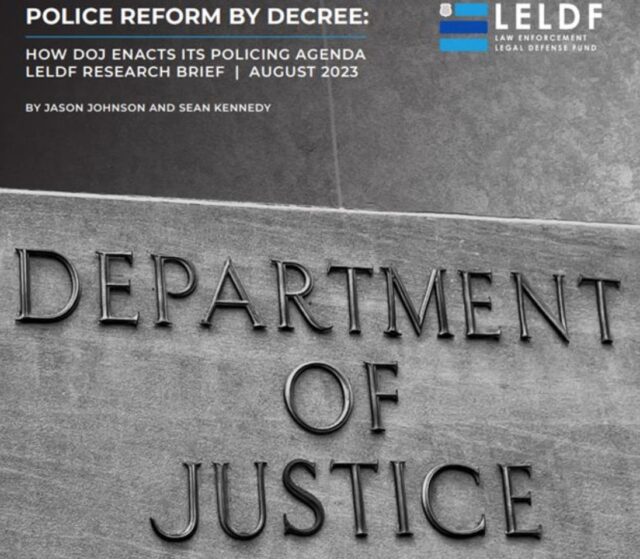Under the 1994 Violent Crime Control and Law Enforcement Act, Congress authorized the Department of Justice (DOJ) to use civil action to secure an agreement or “consent decree” to compel local and state law enforcement agencies to remedy alleged civil rights violations when a “pattern or practice” of racial discrimination or excessive use of force (or both) is found.
Without having to admit guilt or liability for the alleged wrongdoing, the decree requires that the targeted party (i.e., city or agency) demonstrate the reform’s outcomes satisfy the terms of agreement to the overseeing court, often with the approval of the plaintiff. The Justice Department’s involvement is usually precipitated by a controversial high-profile incident (i.e., police involved death) or local activists’ complaints or litigation.
If DOJ chooses to investigate the agency in question, neither the federal government nor the local agency is obligated to disclose the existence of the ongoing probe, but it usually becomes public before the inquiry is completed. The investigation, led by the DOJ Civil Rights Division, “assesses whether any systemic deficiencies contribute to misconduct or enable it to persist.”
The Justice Department reviews police policies, procedures, incident reports, documents, data, and other internal and public materials. It also gathers information from and conducts interviews with members of law enforcement, local officials, and “community members” and “other criminal justice stake holders.”
Since the statute is silent on the matter, the Justice Department has wide latitude on who and how it engages in this process and what evidence it uses in its investigation.” At the conclusion of the investigative period, the Department of Justice issues a public report called a “Findings Letter” that details its evidence and concludes whether or not systemic rights violations can be substantiated.
If, in the opinion of the DOJ, the findings confirm a “pattern or practice” of civil rights violations, the Department proposes remedies “with input from community stakeholders” to address the identified unlawful practices. At this point, the targeted agency can choose to either defend itself against the Justice Department’s findings and its proposed remedies or agree to them and negotiate the terms of a court-monitored settlement. Few jurisdictions opt for the former – often under public pressure or in hopes that a negotiated outcome will be more favorable as an agreement than terms dictated by a court order without local input.
For a detailed view on consent decrees, we recommend reading the research brief called: Police Reform By Decree
The below video also gives background on consent decrees.

